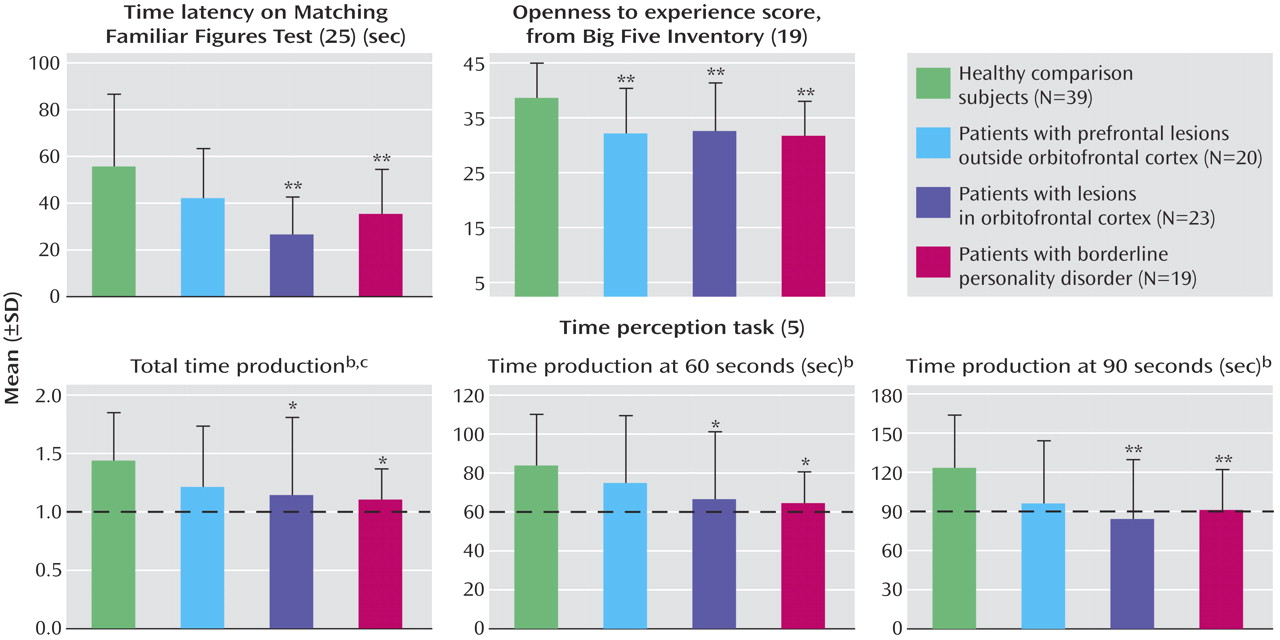Predicting Eating Disorders
Many people diet, but few develop eating disorders. To learn who is most at risk, Fairburn et al. (p. 2249) surveyed 2,992 young women who were dieting and contacted them again four times over the next 2 years. They completed the same eating disorder questionnaire each time. Participants with possible anorexia nervosa, bulimia nervosa, or other eating disorder were interviewed in person. Diagnoses were substantiated for 104 of the subjects, or 3.5%. Participants with and without eating disorders were distinguished by baseline body mass index plus five baseline questionnaire items: frequency of binge eating, frequency of vomiting/laxative use, secret eating, fear of losing control over eating, and desire to have an empty stomach. A simple screening instrument assessing these variables in the original group of dieters would have identified about 70% of the subjects who later developed eating disorders. Incorporating this instrument into routine health assessments might help identify high-risk dieters.
What Sparks PTSD in Firefighters?
It is difficult to determine predisposing factors for posttraumatic stress disorder (PTSD) in retrospective studies because the illness can influence patients’ perception or recollection of pretrauma characteristics. Heinrichs et al. (p. 2276) circumvented this problem by testing healthy probationary firefighters just after basic training and again 6, 9, 12, and 24 months later. At 24 months, 16% of the men met the criteria for PTSD. No psychological or biological variable except body weight changed significantly over time. However, high scores for PTSD symptoms at 2 years were predicted by greater baseline hostility and lower self-efficacy, i.e., self-perceived competence. Firefighters with these two high-risk characteristics at job entry showed a general increase in all psychological symptoms (e.g., PTSD, depression, anxiety, alexithymia) over the 2 years. Hostility and self-efficacy may therefore be informative measures in populations at high risk for trauma-related disorders and could be addressed through coping skills training.
Looking Back at Frontline Treatment
Treatment of acute combat stress reaction on the front lines is preferred by many armies. In the 1982 Lebanon War, Israeli soldiers with combat stress reaction who were treated on the front lines were more likely to return to duty and less likely to develop posttraumatic stress disorder (PTSD) than were soldiers treated back in Israel. How enduring were these benefits? Solomon et al. (p. 2309) administered a questionnaire to the soldiers 20 years after the war. The 79 veterans who had received frontline treatment had a PTSD rate of 30%, compared with 41% among those treated in the rear echelon and 14% among veterans without combat stress reaction. Those who received frontline treatment also had fewer other psychiatric symptoms, less loneliness, and better interpersonal functioning than those treated in the rear. The benefits of frontline treatment for acute stress reaction thus extend far into soldiers’ futures.
Low Gamma Waves in Schizophrenia
Perception of visual forms requires integration of basic visual elements. Oscillations in the gamma frequency range (30–70 Hz) seem to be key to the brain’s ability to bind visual features together. Gamma abnormalities have been found in patients with schizophrenia and could contribute to their perceptual aberrations. Wynn et al. (p. 2330) measured gamma activity in the brains of schizophrenia patients and healthy participants as they identified visual targets with and without visual masks (acting as distractors) shown immediately afterward. Without these masks, the patients did not differ significantly from the comparison subjects in correct identifications or gamma activity. With masking, however, the patients scored lower, produced less gamma activity, and did not show predominance of the right hemisphere. As the right hemisphere is preferentially responsible for processing ambiguous visual information, this deficit seems an important clue to the neurophysiological abnormalities underlying schizophrenia.
Similarities of Borderline Personality to Orbitofrontal Brain Injury
Damage to the orbitofrontal cortex can result in loss of inhibition. Impulsivity is also a characteristic of people with borderline personality disorder, who have shown low orbitofrontal metabolism and volume in some studies. To clarify possible orbitofrontal involvement in borderline personality disorder, Berlin et al. (p. 2360) administered psychological and cognitive tests to patients with borderline personality disorder, patients with orbitofrontal damage, comparison patients with damage to other parts of the prefrontal cortex, and healthy subjects. The patients with borderline personality disorder were more emotional and neurotic, and less extroverted and conscientious, than all other groups. However, they were similar to patients with orbitofrontal damage in having more impulsivity and anger, less happiness, and more inappropriate behaviors than the other two groups. The possible involvement of the orbitofrontal cortex in some deficits in borderline personality disorder may suggest new treatment approaches.
Images in Psychiatry
Anton Pavlovich Chekhov (1860–1904) (p. 2248)



